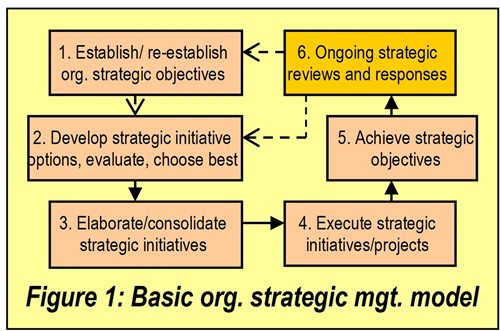with provision for operations users to convert
three key types of project outputs
into operational outcomes/benefits
FEATURED PAPER
By Alan Stretton, PhD (Hon)
Sydney, Australia
INTRODUCTION
This article has been prompted by two overlapping concerns. The broader of these is my long-held concern that the project management literature all too seldom takes adequate account of the contexts in which projects are undertaken. A project is not an end in itself. It is a means of helping someone achieve a broader end, in a broader context. Whilst this attracts some lip service from time to time, actual representations in the literature of projects and their management seldom show these contexts, let alone specific connections between the projects and the end results – the outcomes and/or benefits – to which they contribute.
An overlapping concern is that the project management literature all too often represents project management as being responsible for converting project outputs/ deliverables into outcomes and benefits. This is only rarely the case, as I discussed in some detail in Stretton 2020e. The ultimate responsibility for converting strategic initiative/project deliverables into outcomes and benefits clearly lies with the users of these deliverables. Only in very rare cases are the users also the delivering project managers. In some cases the latter may be able to help the users in converting outputs to outcomes. However, in the majority of cases, the outputs are delivered to the users, and there is little, if any, further involvement by project management.
This situation is seldom specifically acknowledged in the project management literature. Consequently, its processes and models rarely make specific provision for users, and for their role in converting strategic initiative/project deliverable into outcomes and benefits. However, there can be little argument that the ultimate use to which project deliverables are to be put, should be a key consideration in all project processes. It therefore makes sense to include representation of the users and their conversion role in all depictions of project management processes.
This article proposes a framework and format for doing this. It first develops a basic organisational strategic-and-operations framework to include operational users, outcomes/benefits, and their contribution to achieving strategic objectives. It then identifies and discusses three major groups of strategic initiatives and their component projects, and demonstrates how their deliverables, operational users, and outcomes/ benefits can be represented in the strategic-and-operations model, offering a type of transparency and detail which is rarely seen in the project management literature.
DEVELOPING AN ORGANISATIONAL STRATEGIC-AND-OPERATIONS MODEL
A note on terminologies
For some time now I have used the descriptor strategic initiatives for the actual actions taken by an organisation to achieve its strategic objectives, broadly in line with the following definition from Cooke-Davies 2016.
….a project, portfolio of projects, other discrete program or series of actions undertaken to implement or continue the execution of a strategy, or that is otherwise essential for the successful implementation or execution of a strategy. This includes some (usually high priority) projects, but does not entail the entire project portfolio.
In this article I will be using the terminologies strategic initiatives and projects more or less interchangeably, and sometimes jointly as strategic initiatives/projects.
A basic recursive organisation strategic management model, & users/operations
Figure 1, to the right, represents the basic recursive strategic management model which I first discussed in Stretton 2020l, and which has been the backbone of most of my discussions on strategic initiatives in subsequent articles in this journal. However, this basic model does not include provision for the users of the deliverables/outputs from Stage 4 who convert them into outcomes and benefits, to help achieve the Stage 5 strategic objectives.
Additionally, users are invariably part of the operating units of organisations, which are also not provided for in the basic model in Figure 1. In some earlier articles in this journal I have included provision for both users and operations, broadly as follows.
More…
To read entire paper, click here
How to cite this paper: Stretton, A. (2021). An organisational strategic-and-operational framework with provision for operations users to convert three key types of project outputs into operational outcomes/benefits; PM World Journal, Vol. X, Issue VIII, August. Available online at https://pmworldlibrary.net/wp-content/uploads/2021/08/pmwj108-Aug2021-Stretton-organizational-strategic-and-operational-framework-with-provision-for-operations-users2.pdf
About the Author

Alan Stretton, PhD
Faculty Corps, University of Management
and Technology, Arlington, VA (USA)
Life Fellow, AIPM (Australia)
![]()
Alan Stretton is one of the pioneers of modern project management. He is currently a member of the Faculty Corps for the University of Management & Technology (UMT), USA. In 2006 he retired from a position as Adjunct Professor of Project Management in the Faculty of Design, Architecture and Building at the University of Technology, Sydney (UTS), Australia, which he joined in 1988 to develop and deliver a Master of Project Management program. Prior to joining UTS, Mr. Stretton worked in the building and construction industries in Australia, New Zealand and the USA for some 38 years, which included the project management of construction, R&D, introduction of information and control systems, internal management education programs and organizational change projects. He has degrees in Civil Engineering (BE, Tasmania) and Mathematics (MA, Oxford), and an honorary PhD in strategy, programme and project management (ESC, Lille, France). Alan was Chairman of the Standards (PMBOK) Committee of the Project Management Institute (PMI®) from late 1989 to early 1992. He held a similar position with the Australian Institute of Project Management (AIPM), and was elected a Life Fellow of AIPM in 1996. He was a member of the Core Working Group in the development of the Australian National Competency Standards for Project Management. He has published over 230 professional articles and papers. Alan can be contacted at alanailene@bigpond.com.au.
To see more works by Alan Stretton, visit his author showcase in the PM World Library at http://pmworldlibrary.net/authors/alan-stretton/.









